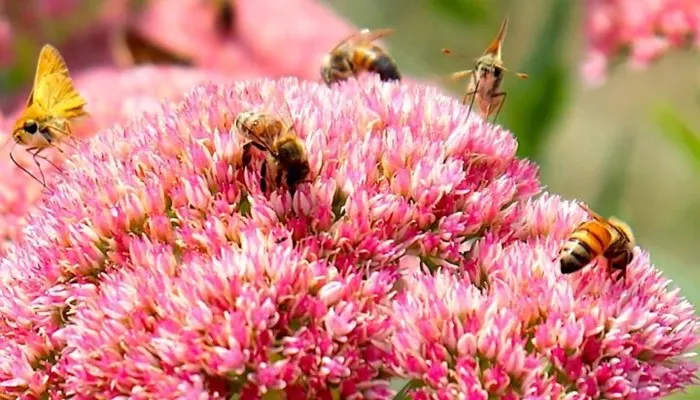Sedums are renowned for their resilience, able to endure extreme heat and drought. Remarkably, some varieties are winter-hardy as far north as USDA hardiness zone 3. “In short, sedums are about as low-maintenance as plants can get,” says David Trinklein, a state horticulturist with the University of Missouri Extension.
The sedum genus includes succulent, herbaceous perennials with fleshy, flat, or rounded leaves. With up to 400 species, sedums vary widely in form. Some grow just an inch or two tall and spread along the ground, while others can reach heights of about 24 inches.
Taller sedums produce large clusters of tiny, star-shaped flowers in shades of white, yellow, pink, or red. “Because they bloom late in the summer and into the fall, they are perfect for extending the flowering season of a pollinator garden,” Trinklein notes.
According to MU Extension horticulturist Tamra Reall, sedums are valuable for their late-season blooms. “They provide a crucial food source for pollinators when other flowers are scarce. Their nectar-rich blooms attract bees, butterflies, and other pollinators,” Reall adds.
Low-growing sedums were initially valued for their foliage. They spread through roots that form on their creeping stems, making them ideal for sunny slopes, rock gardens, ground covers, and even green roofs.
Sedums thrive in full sun with average to dry, well-drained soils. As succulents, they require good soil drainage and prefer sandy or gravelly soils of average to moderate fertility. Overly rich soils or excessive shade can lead to weak, floppy growth. While they can tolerate some light shade, they do not handle foot traffic well.
To encourage thicker, bushier growth, pinching sedums in spring is recommended. Like most herbaceous perennials, sedums can be planted in the fall, but spring usually offers a better selection at garden centers and nurseries.
Related topics:
- Four Plants That Will Chase Rats Away from Your Garden
- How Plants Prevent Viruses from Passing to Their Offspring
- Four Carnivorous Plants Thrive in East Texas — But Only Insects Are at Risk


